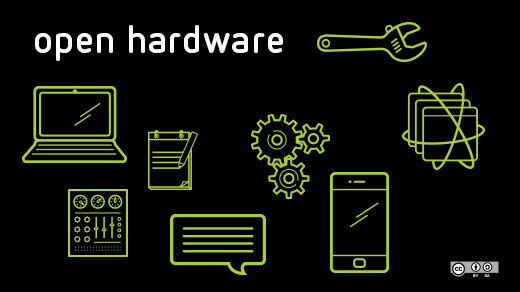Recently I came across a very interesting open hardware project called Shellmo. What caught my eye was that it's a 3D printed crustacean that seems to have no apparent real world use, though with a little creativity I can see educational implications.
Shellmo is a unique, almost cartoon-like creatures that could captivate the imagination of children while at the same time affording them an opportunity to 3D print their own robot. With the current emphasis on STEM in education, Shellmo appears to be the kind of project that would stimulate student interest.
Shellmo is powered by an Arduino board and the parts can be downloaded and printed. The design files can be modified using Blender—a potential fun project for individuals, families, or teachers, and students.
To learn more, I reached out to the creator Sho Yoshida.

What was your inspiration for Shellmo?
When I was manufacturing Shellmo, I had an aquarium filled with sea water where I kept coral and hermit crabs. One day, I was collecting ideas about 3D printable robots when I glanced at the aquarium. I took a closer look and realized that the hermit crab shells were very different from what I'd seen in the past. It was such a big change that they looked like they were of a different species altogether! It was then that I was struck with the idea of an exchangeable shell module.
The name Shellmo is derived from this idea: shell module.
What's Shellmo2?
In the Shellmo2 project, we made the face using a smartphone. I fixed the smartphone with a 3D printed clip, and moved the face up and down with the servomotor that was installed at the base. Although it is still in trial phase, I think the user can do interesting things to Shellmo, like making facial expressions. We have a "painful" expression when it bumps into a wall. It's linked to a sensor.
How do you license Shellmo?
We have published our 3D printable files under Creative Commons (CC BY 4.0 and CC BY SA 4.0). And, the software for the controller app is under an MIT license. You can find all of that on GitHub.
How did you get started in on your journey towards building open hardware?
I started this project because I wanted to create a robot that was alive.
I've loved to make things with my hands ever since I was a young kid and have worked on various handcrafts projects. I was a member of the local city Invention Club for elementary and middle school students, and I played with soldering stuff often with friends. On top of making things, I also love living things and nature. As a young child I was a member of the Outdoor Activity Club and we often went on field trips to the nearby mountains and rivers. On those field trips, I was able to witness firsthand the tremendous activity and spontaneity of living things and it made a deep impression on me.
I wanted to recreate this life that I'd seen.
I created a robot in high school that was highly praised and was exhibited in overseas competitions and fairs, like Intel ISEF. I was able to look at things from various perspectives after the robot was openly displayed to the rest of the world. It was then that I realized one could gain new ideas from new perspectives.
I became acquainted with open source when I was in high school, and learned of Linus Torvalds from lectures. I began to look up to his technique and the way he viewed and thought about open source. While I majored in biology at the university, I continued to create robots during my free time at home.
One day, I had a chance to use an industrial version of a 3D printer. I was honestly astonished and shocked when the 3D printer began to synthesize the model that I had designed. Seeing it taking form and shape before my very eyes with mere plastic powder was stunning. It was different from the usual machine tools that I'd used and did not require any special techniques or skills. Anyone could easily create their desired shapes from images. I remember finding it miraculous that 3D printing allowed one to easily and freely traverse between one's imagination and reality.
3D printing has now become popular and widespread. Anyone can easily create things and share them with other people. As I thought about how this trend would go forward, I realized that it's possible to publish physical things under an open license.
In my case, I first used the 3D printer with the aim of wanting to make a robot. I eventually created a real robot using the 3D printer, shared it as open source, and started to gain an interest in running this as a project: a robot that is shared and made by everyone, via a worldwide communal exchange. A robot that continues to live through the gradual changes made to its body. My dream is to make a robot that lives, strange as it may sound. And when I realized this, I started to create a robot on open source and via the open source process.
What other open source hardware do you have up your sleeve?
We also make these open source robots.
3D printable humanoid on GitHub.
Megapede, a new module for Shellmo, on GitHub.
WoodWalker, a new project that branched from RepWalker (a module of Shellmo). Check out the wiki.







Comments are closed.